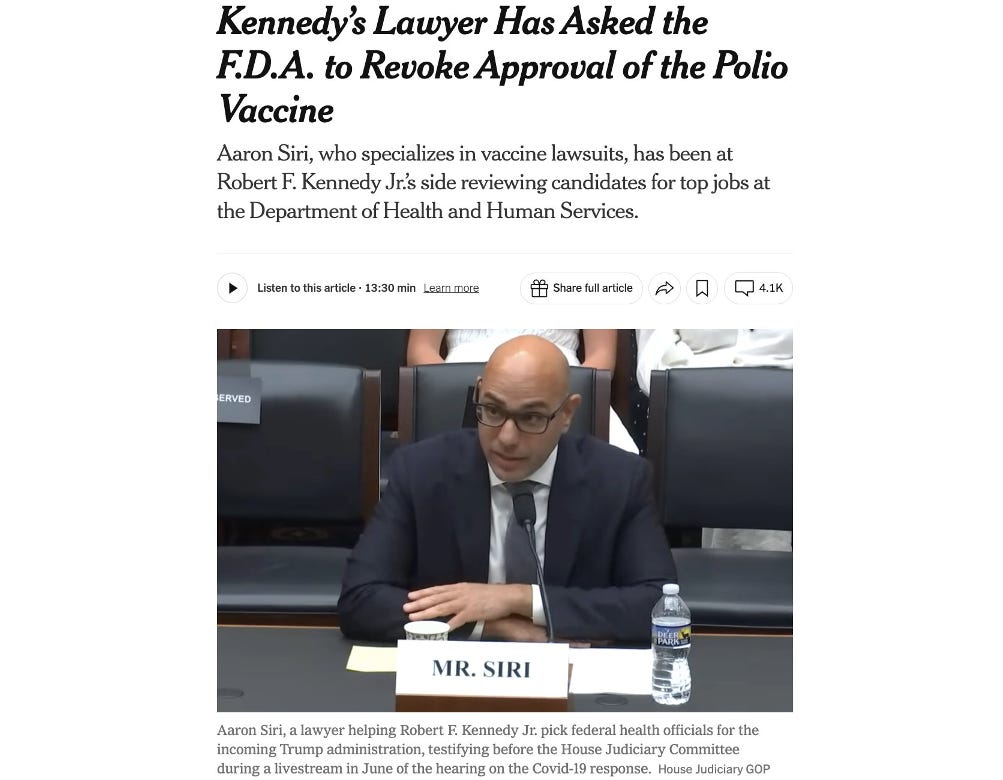The New York Times Misleads Readers in Polio Vaccine Controversy
The newspaper giant was more interested in political skirmishes than upholding the truth.
The New York Times recently found itself in hot water after it published an article, aimed at discrediting Robert F. Kennedy Jr, the incoming head of the US Department of Health and Human Services.
At the core of the controversy is a legal petition filed in August 2022 by attorney Aaron Siri on behalf of his client, the Informed Consent Action Network (ICAN).
The petition raised serious concerns about the FDA’s approval process for IPOL, a polio vaccine manufactured by Sanofi.



